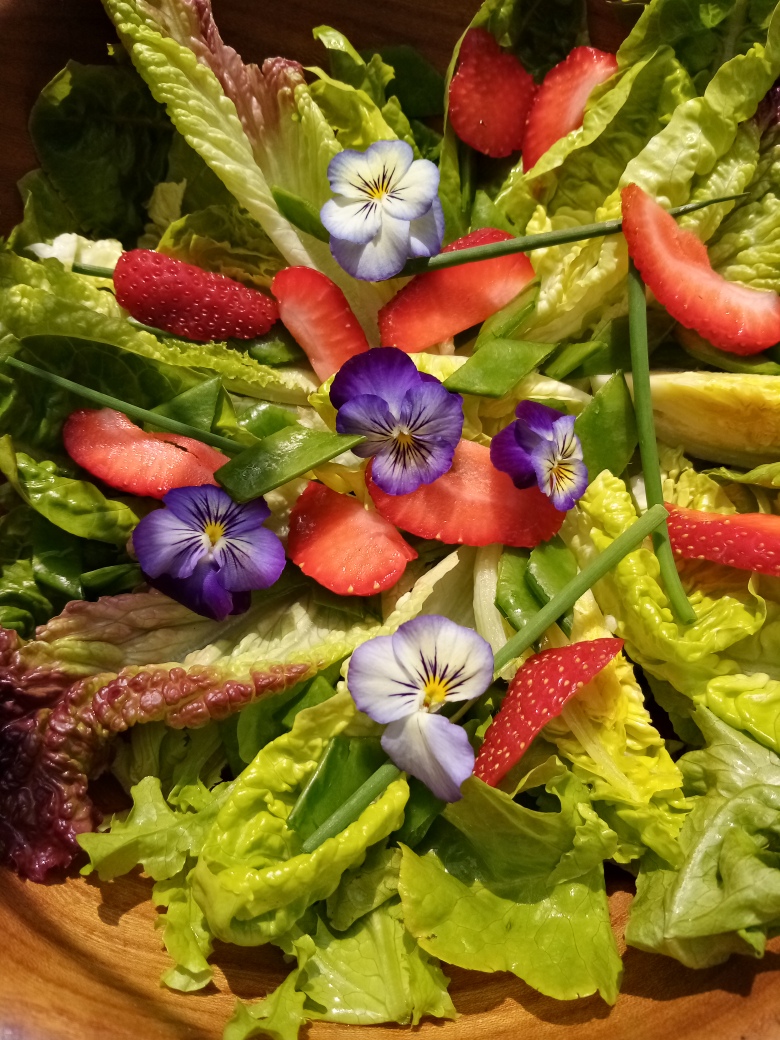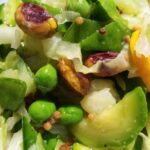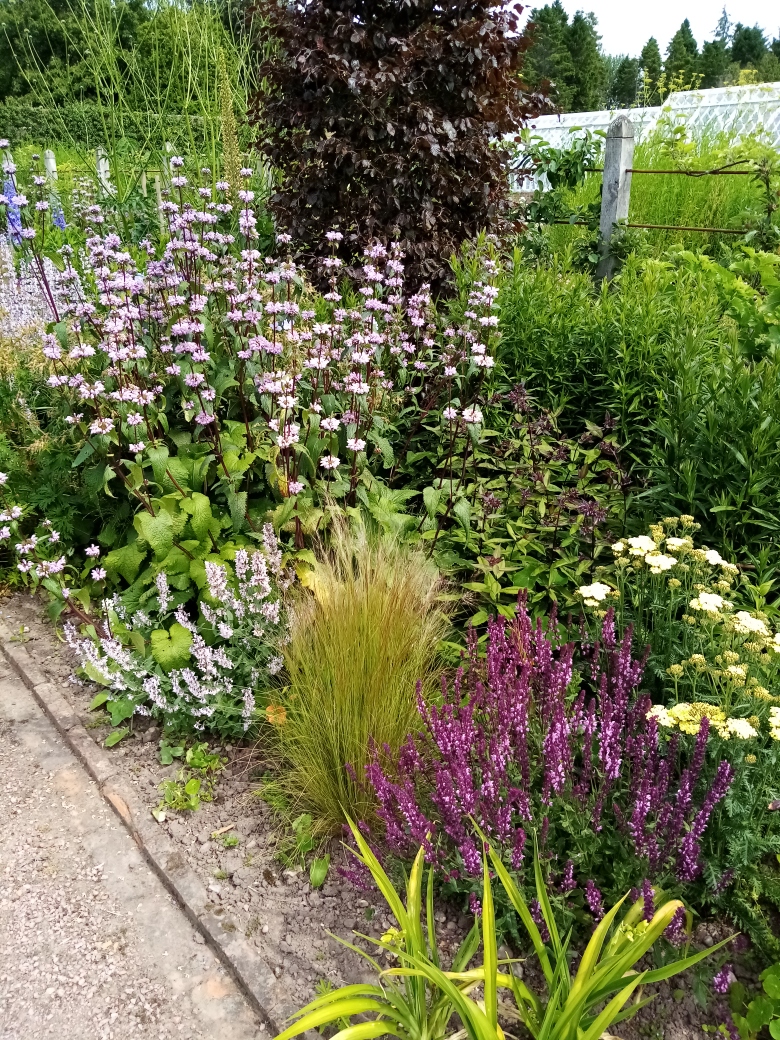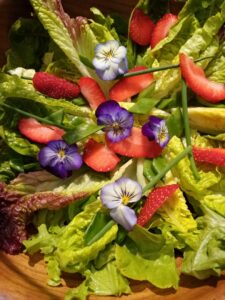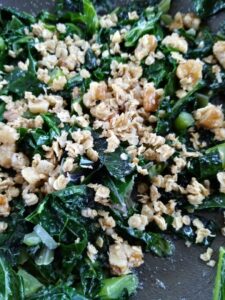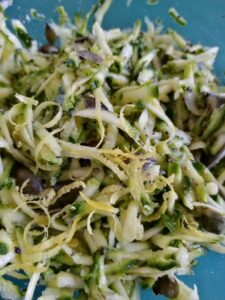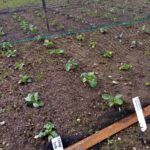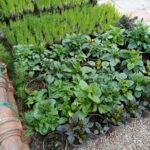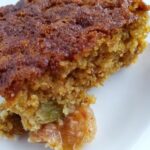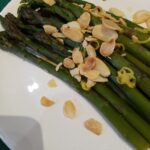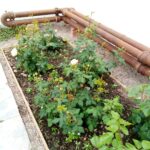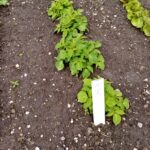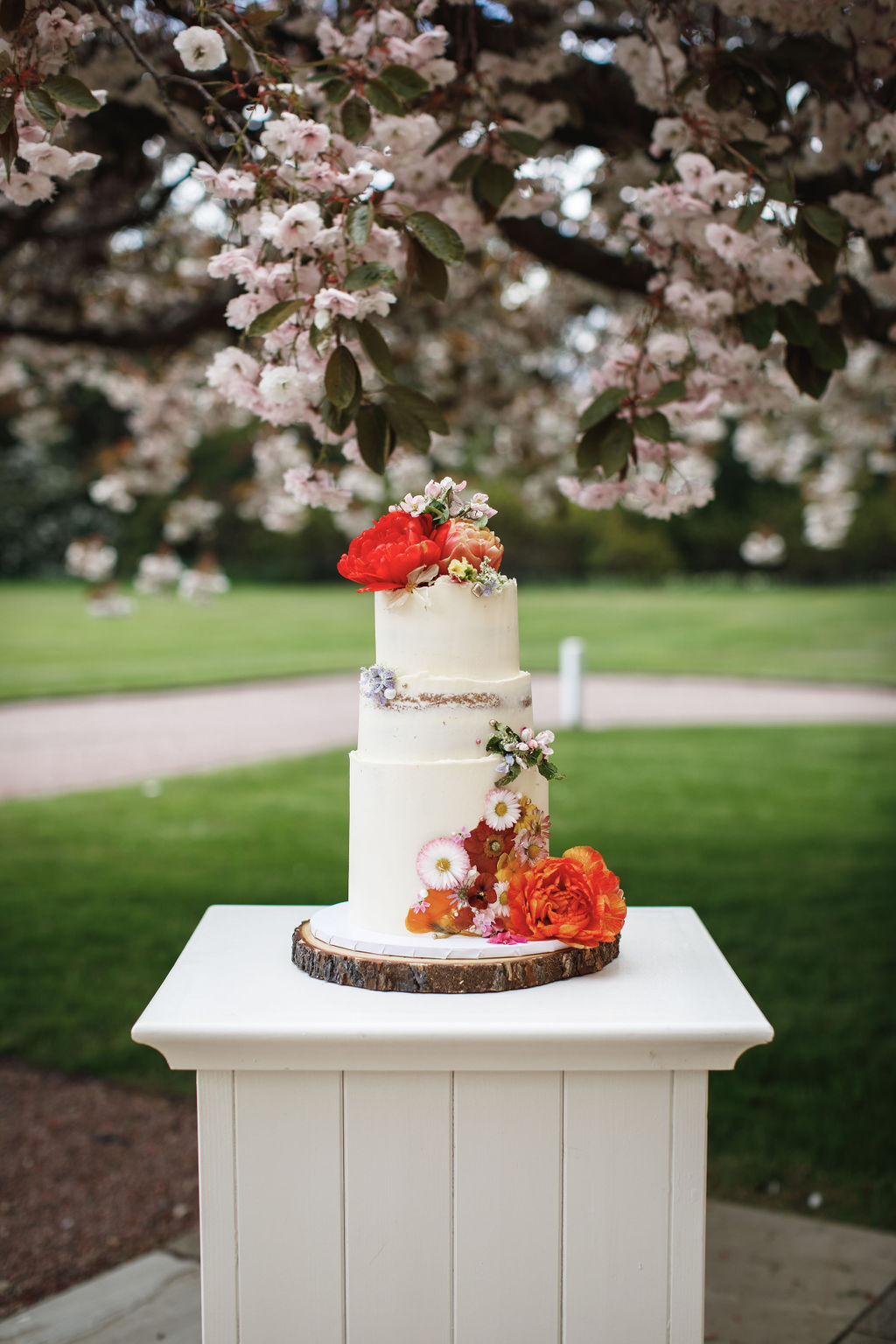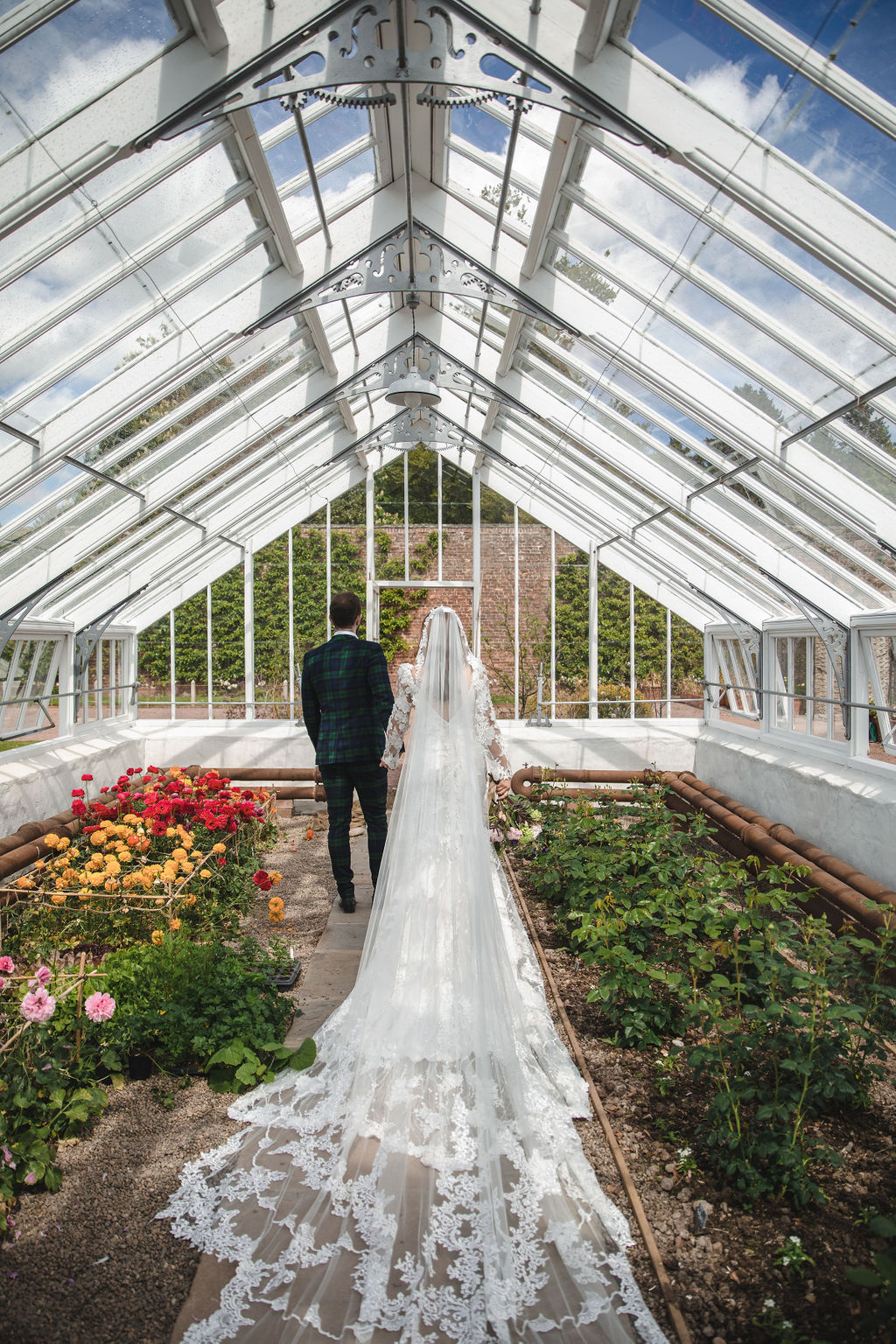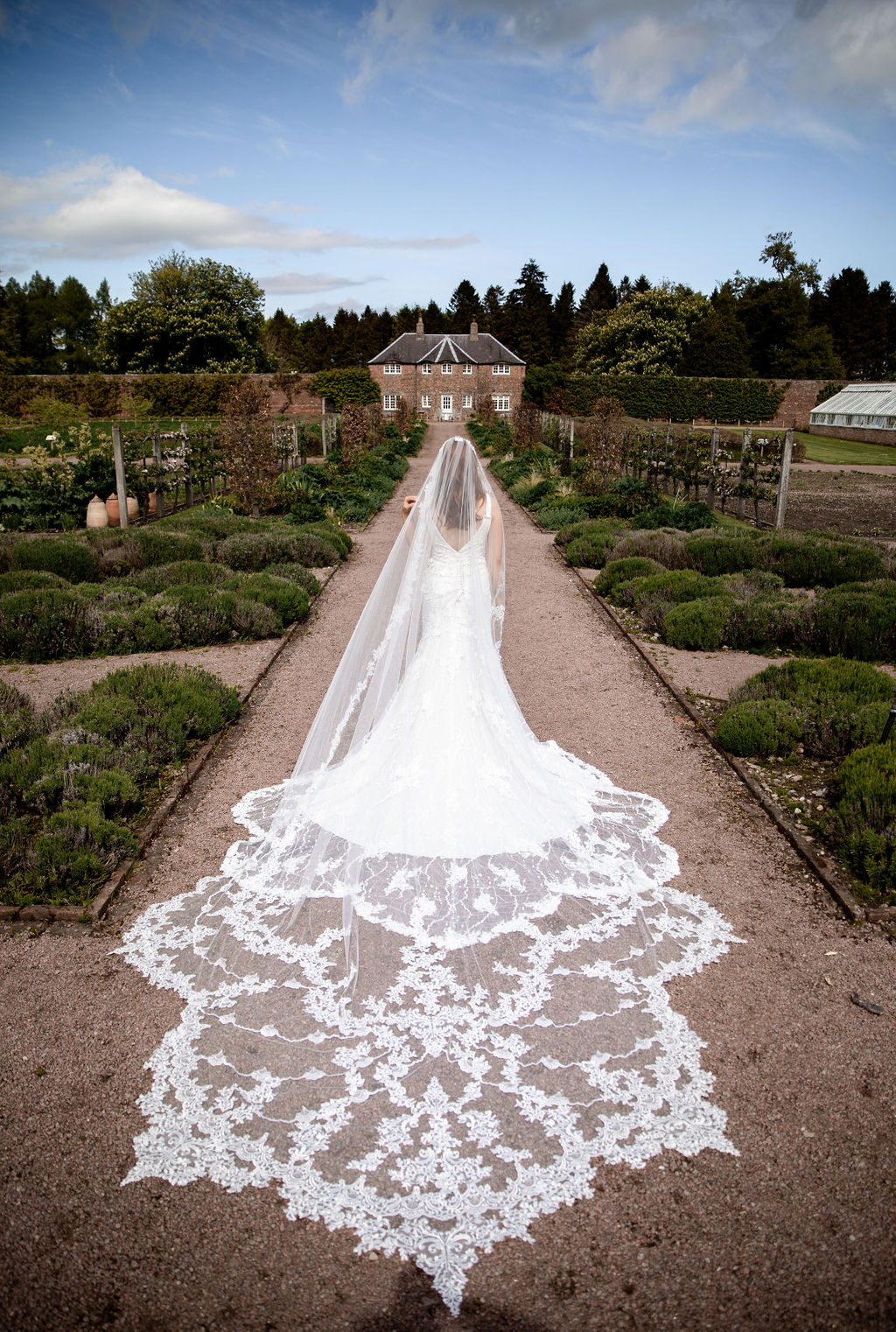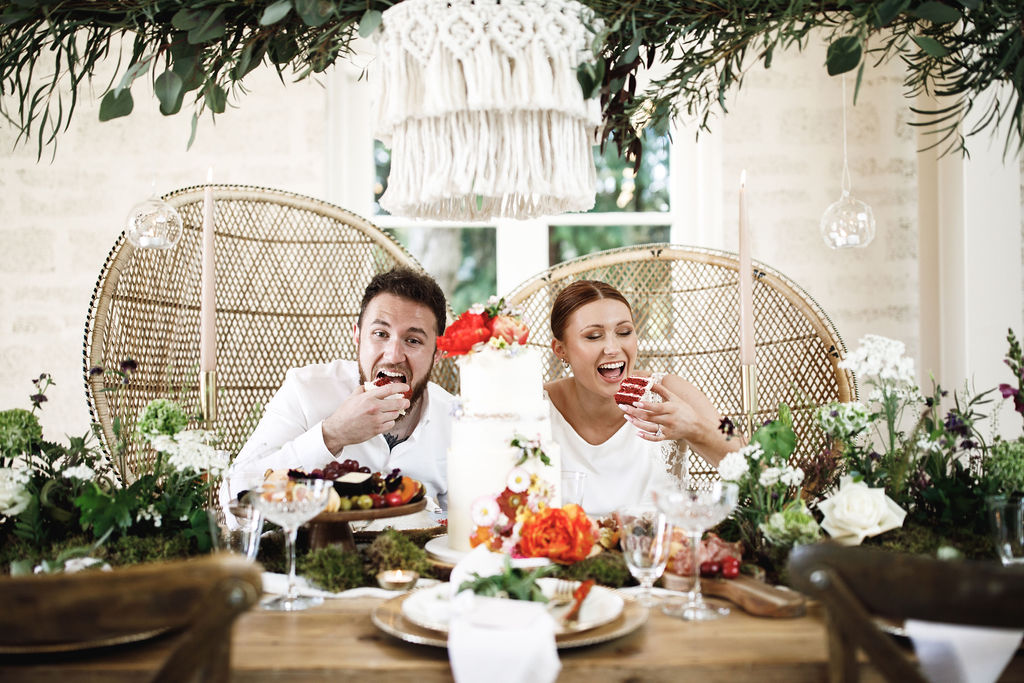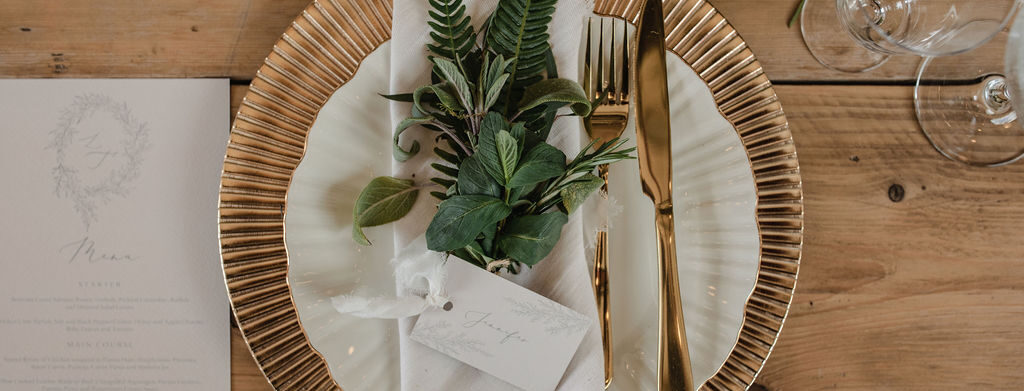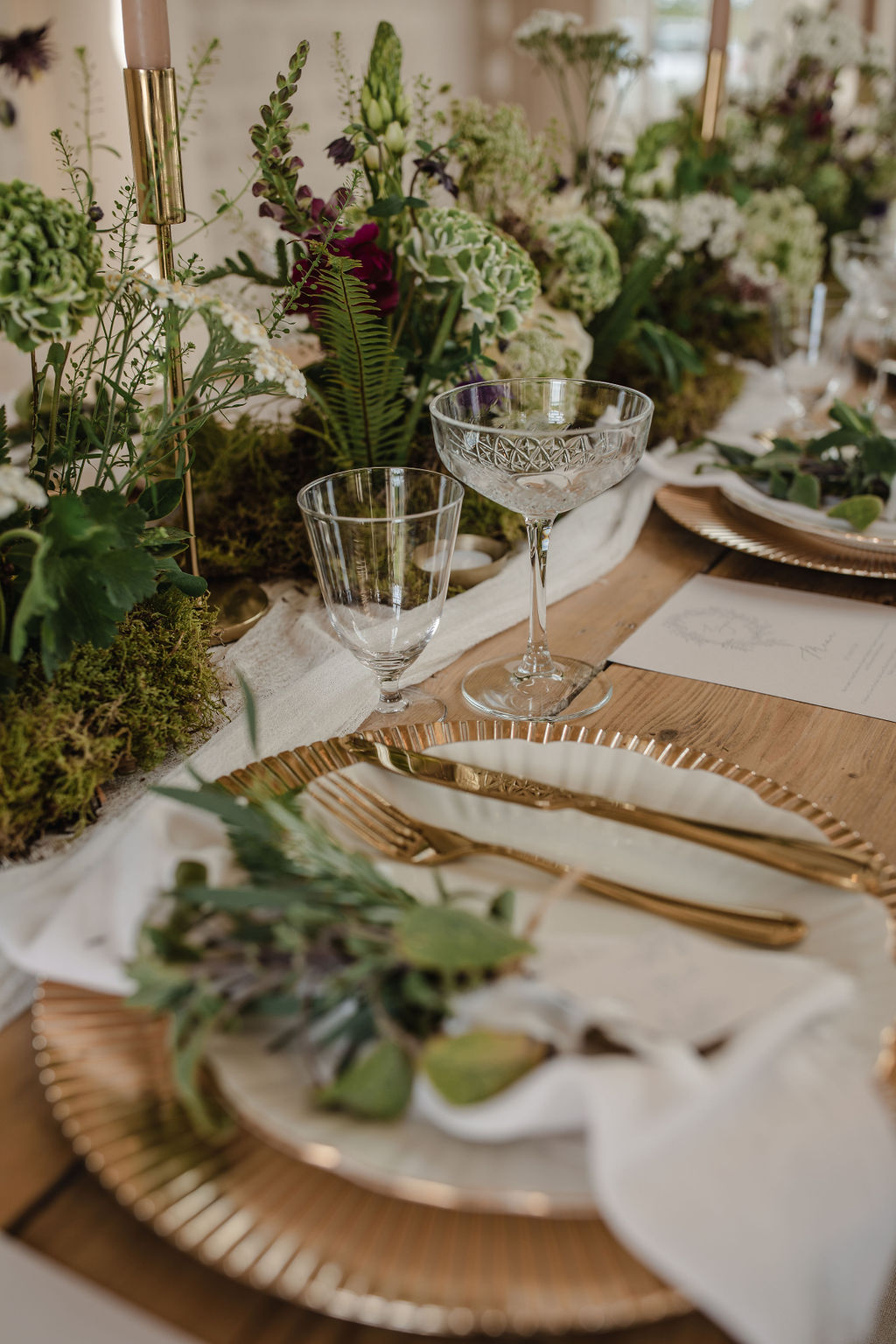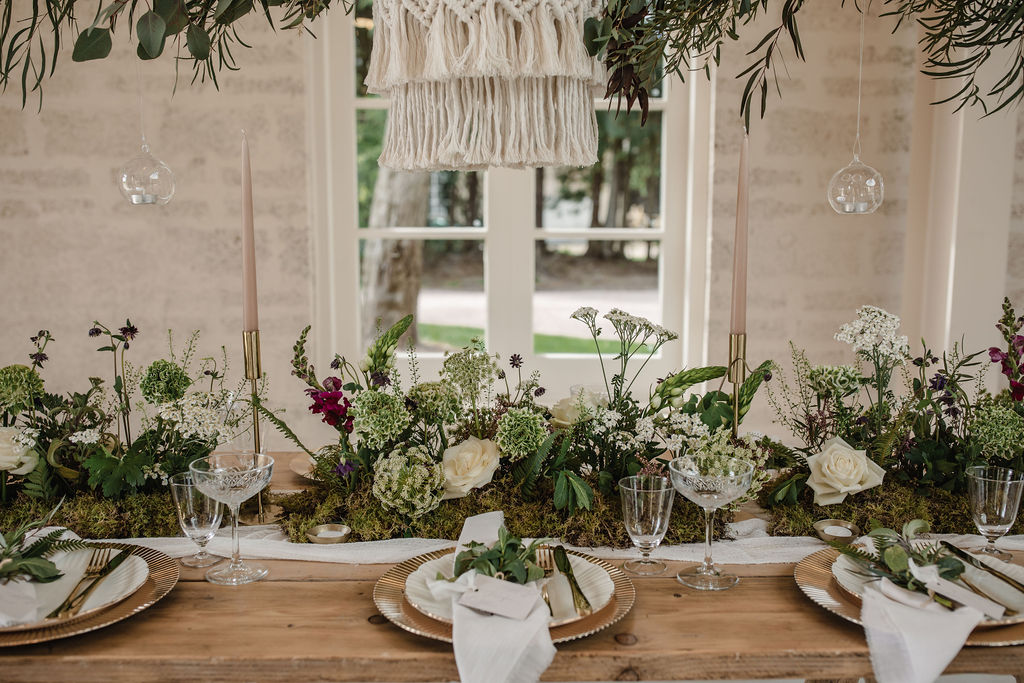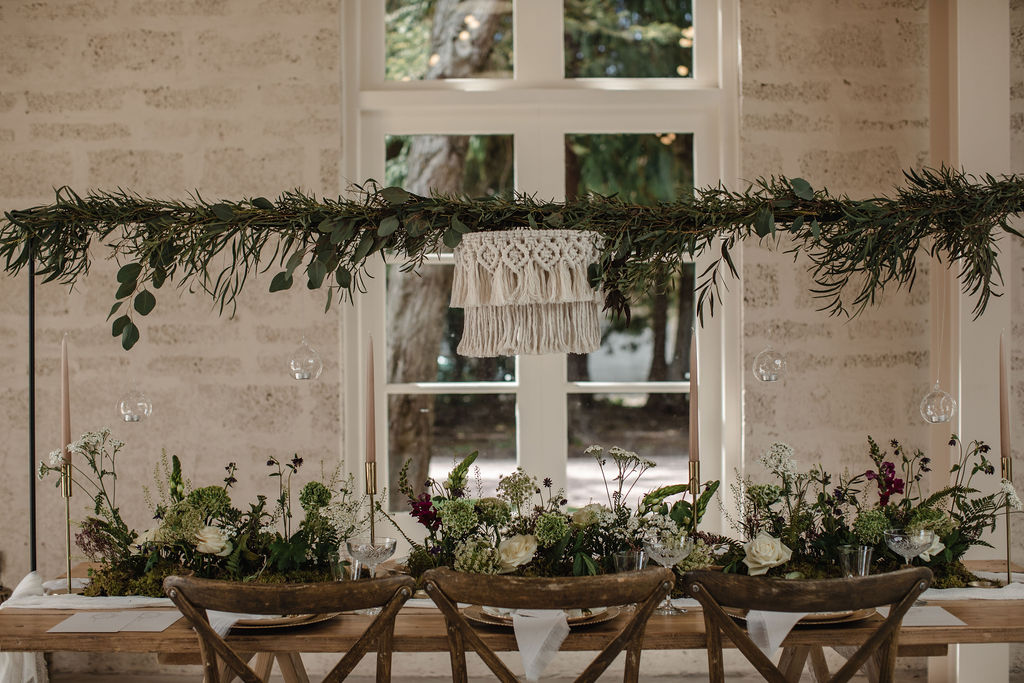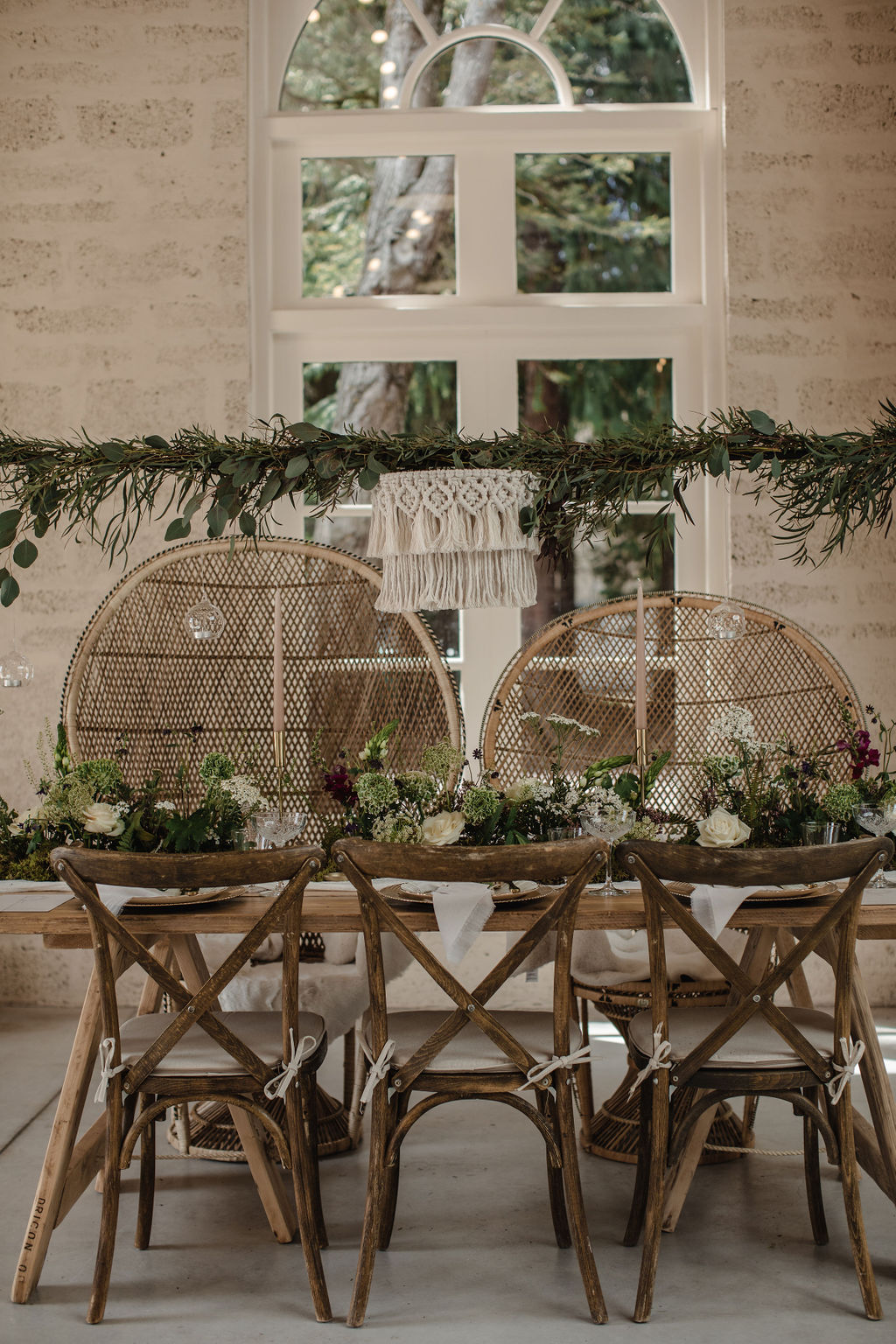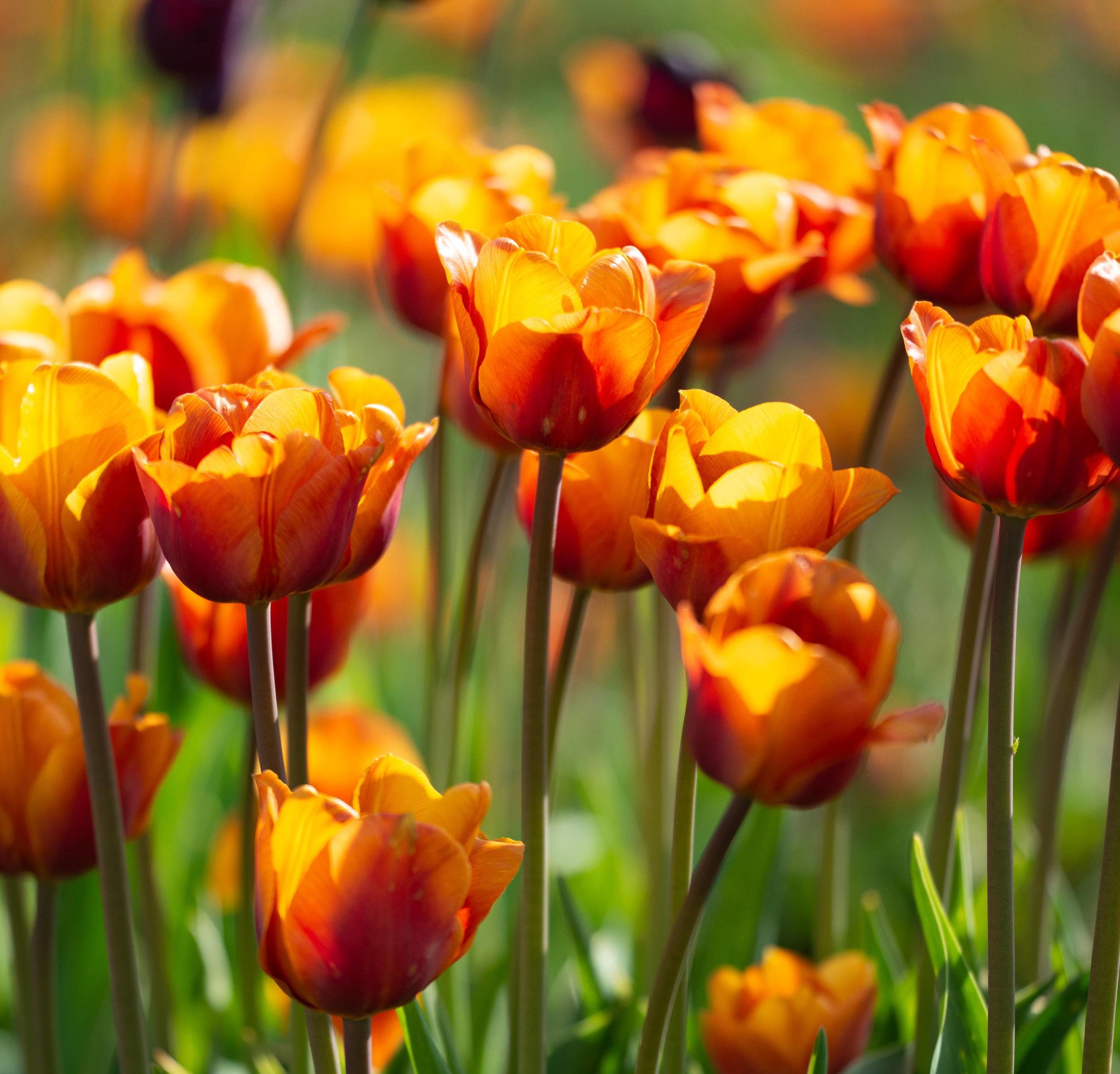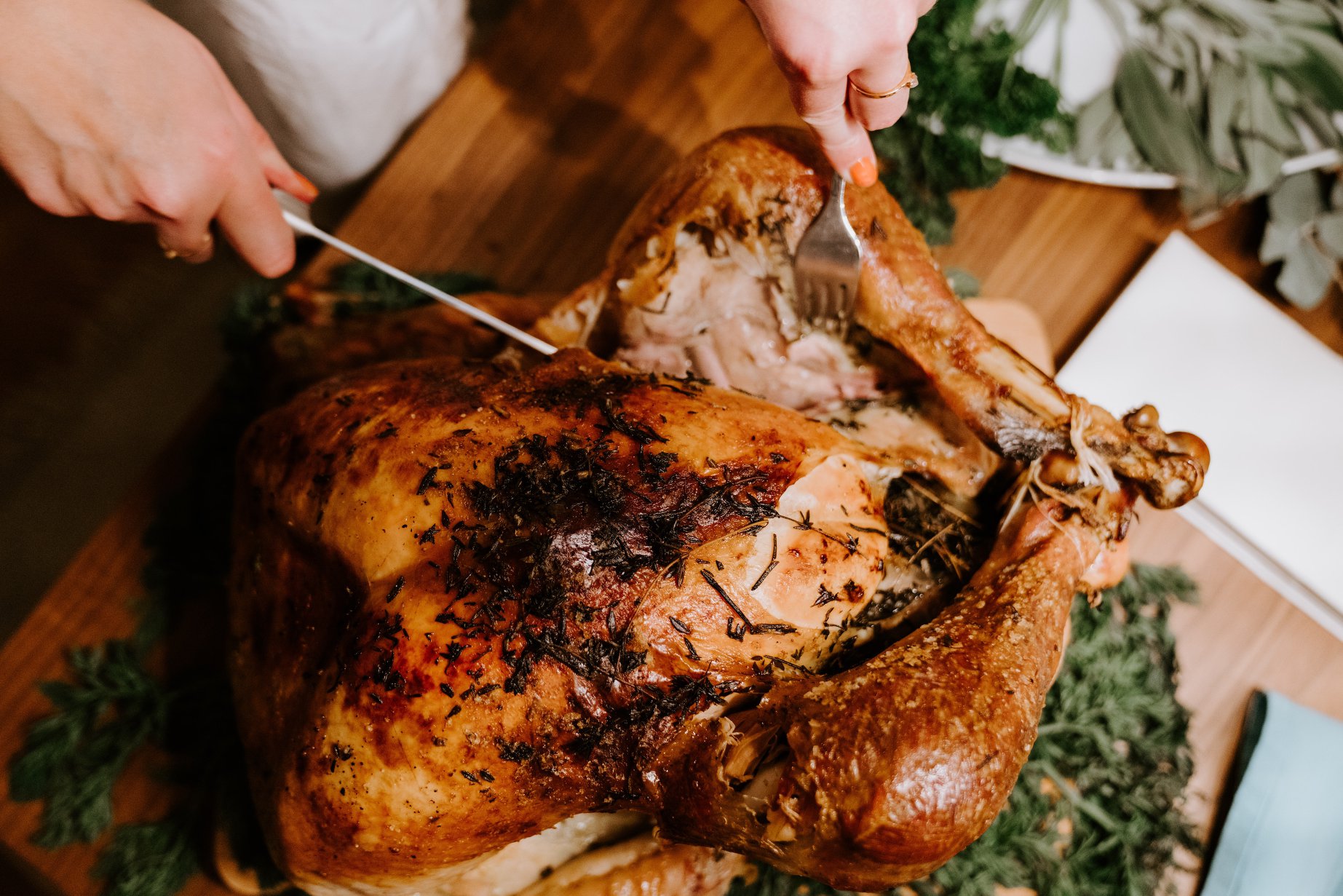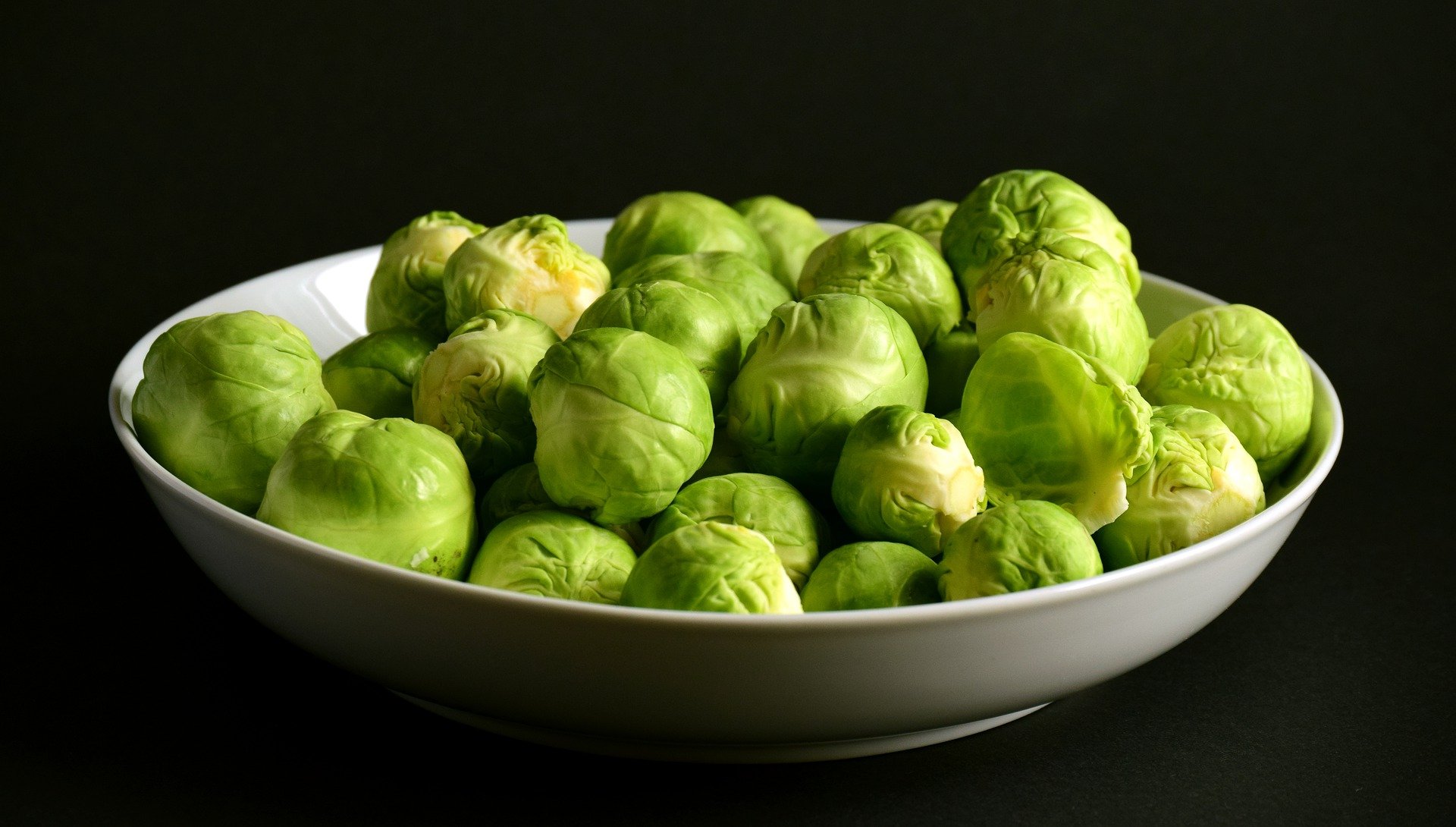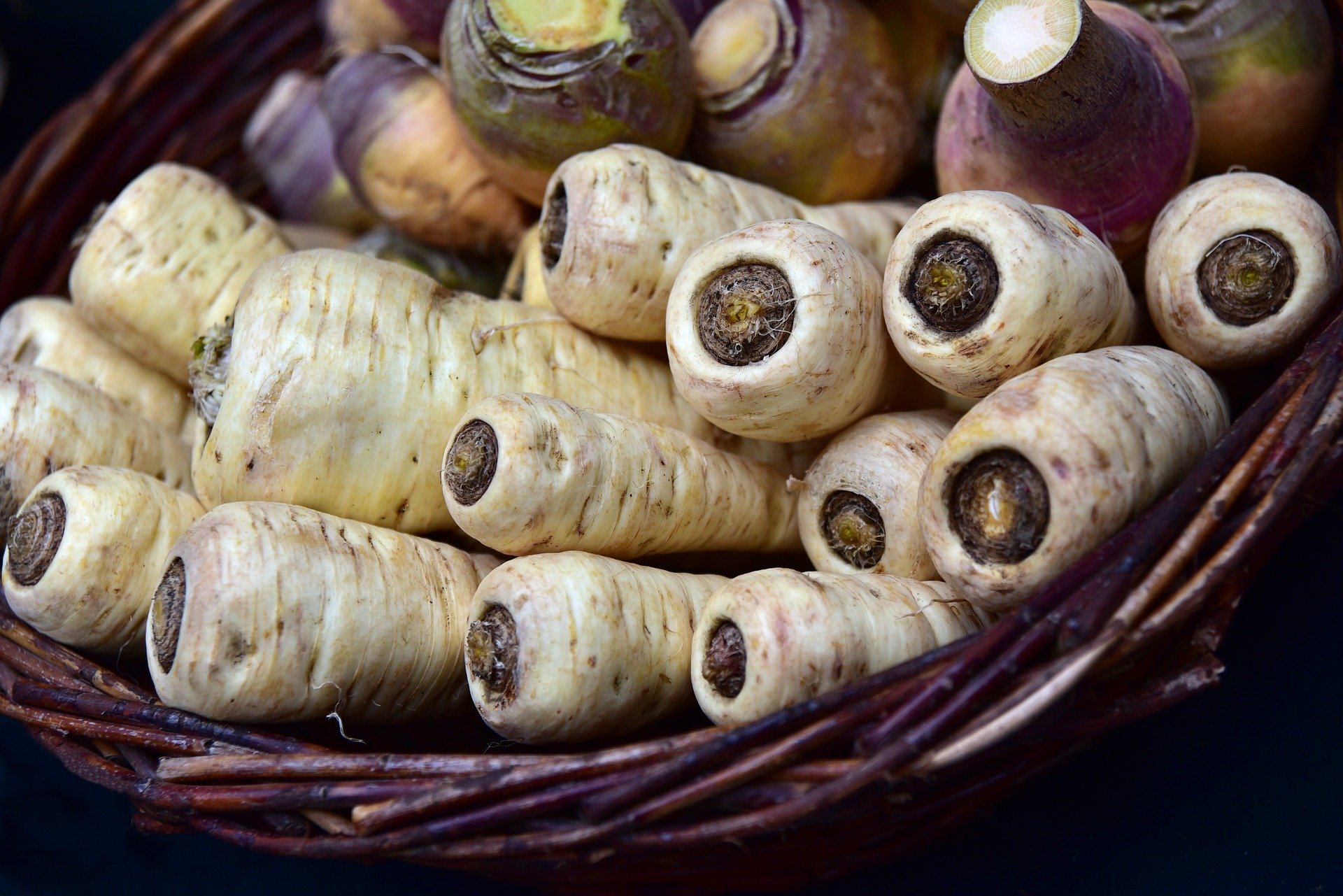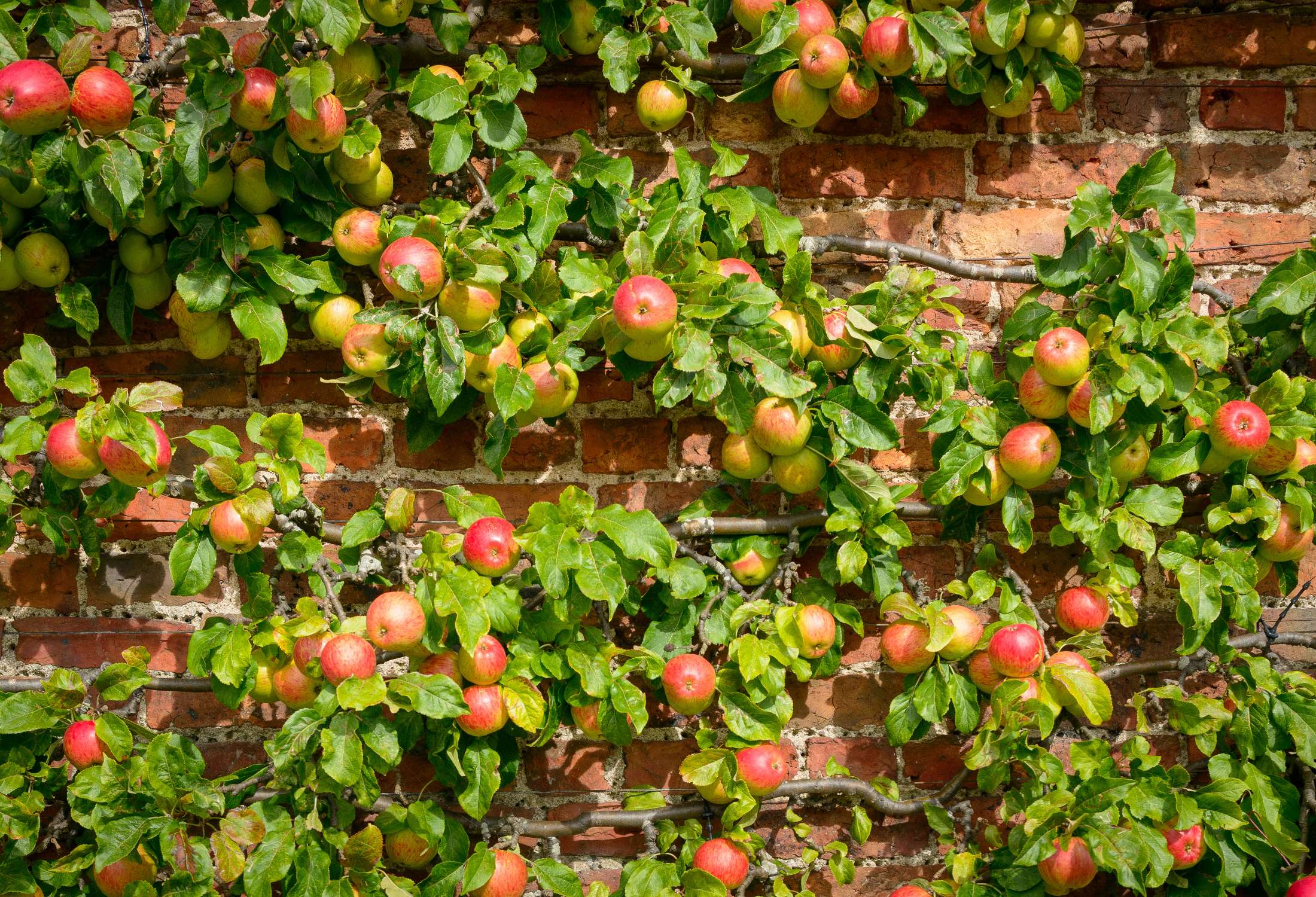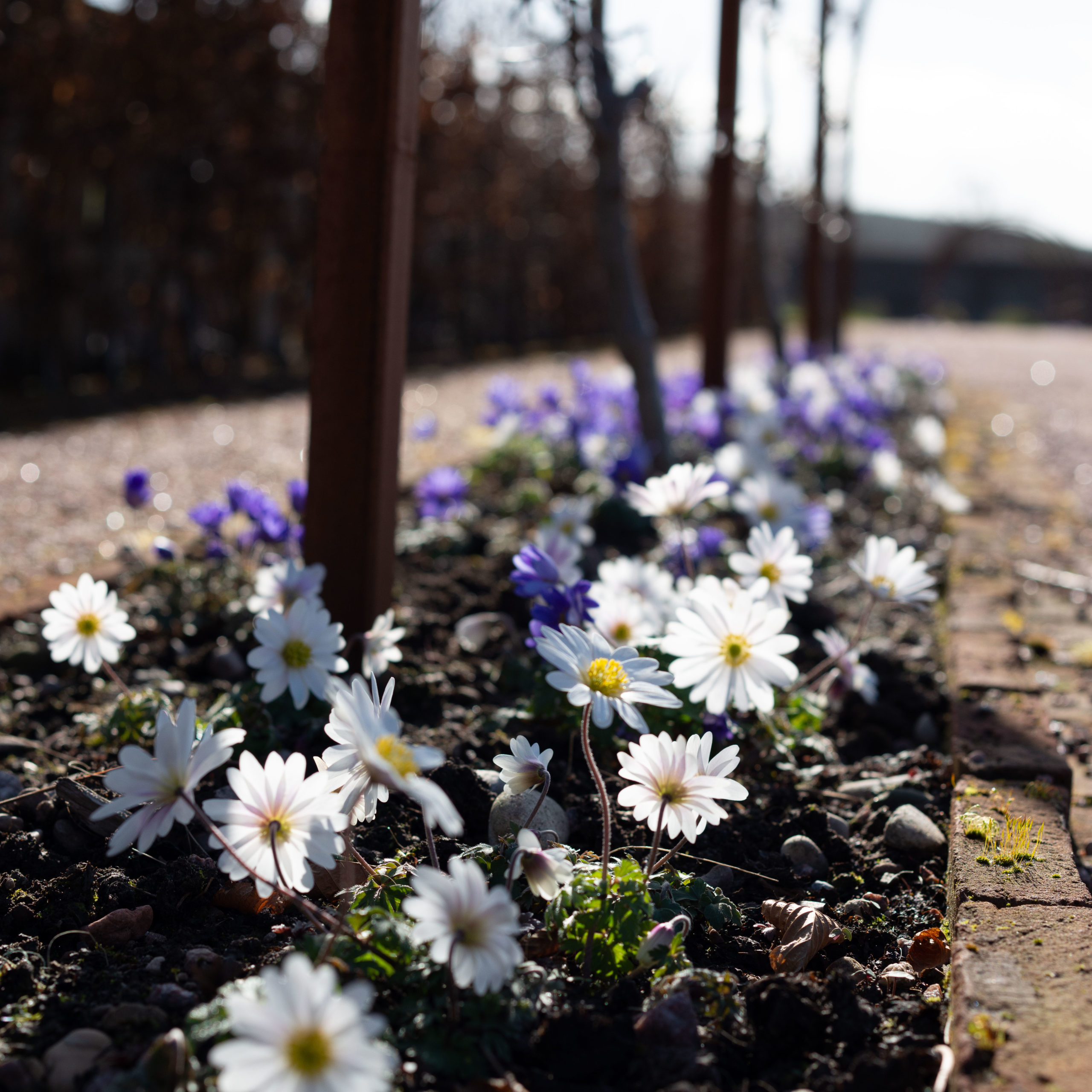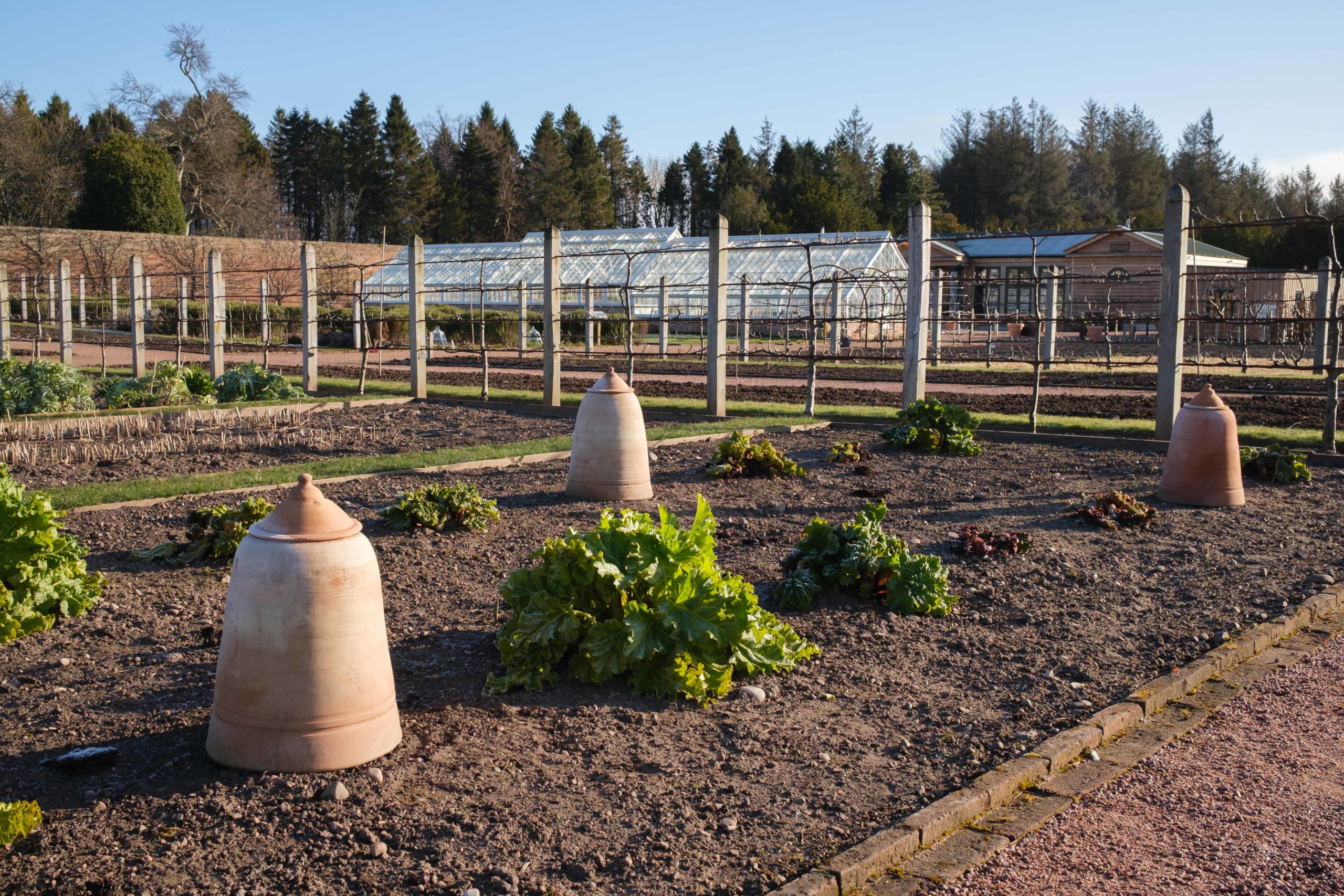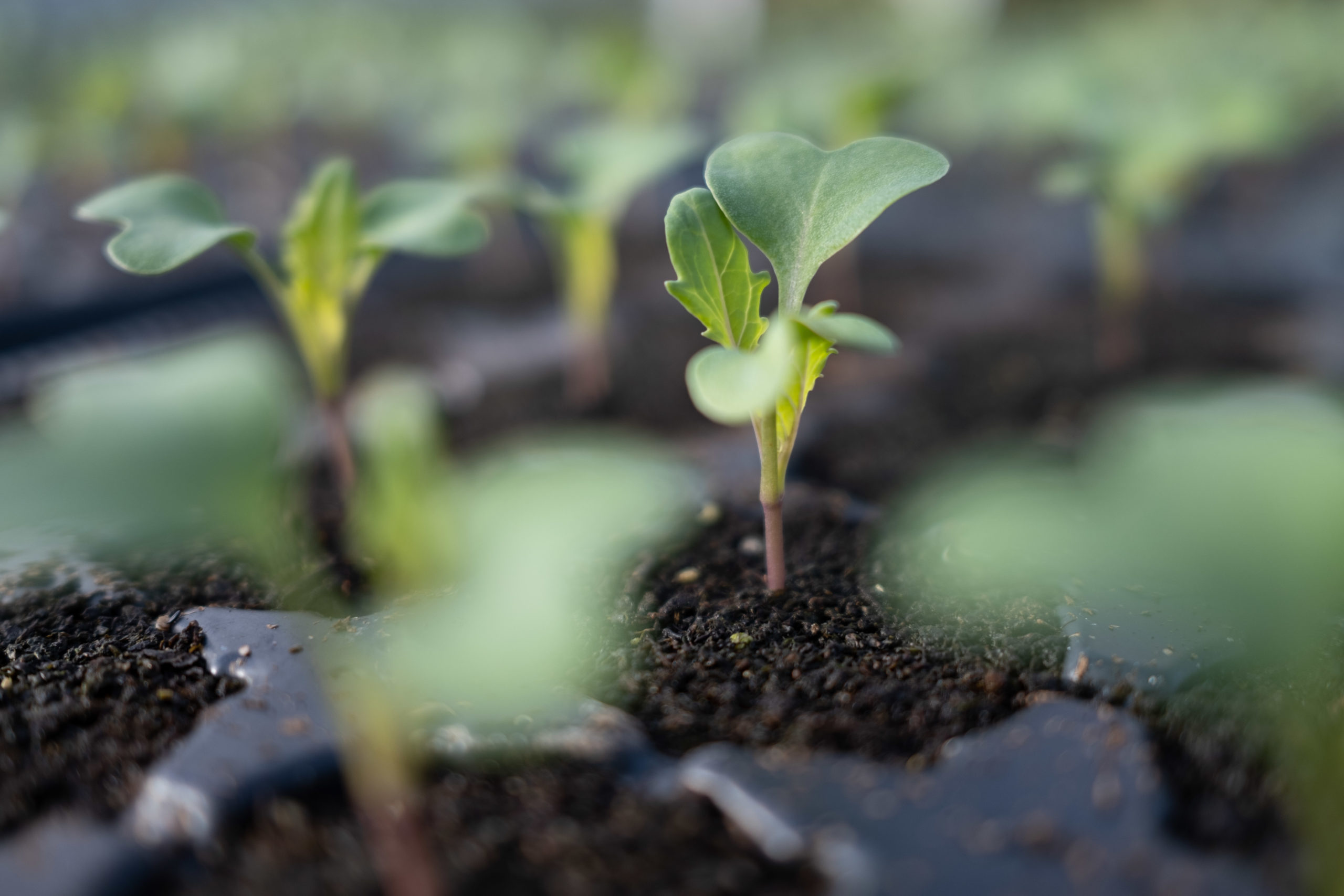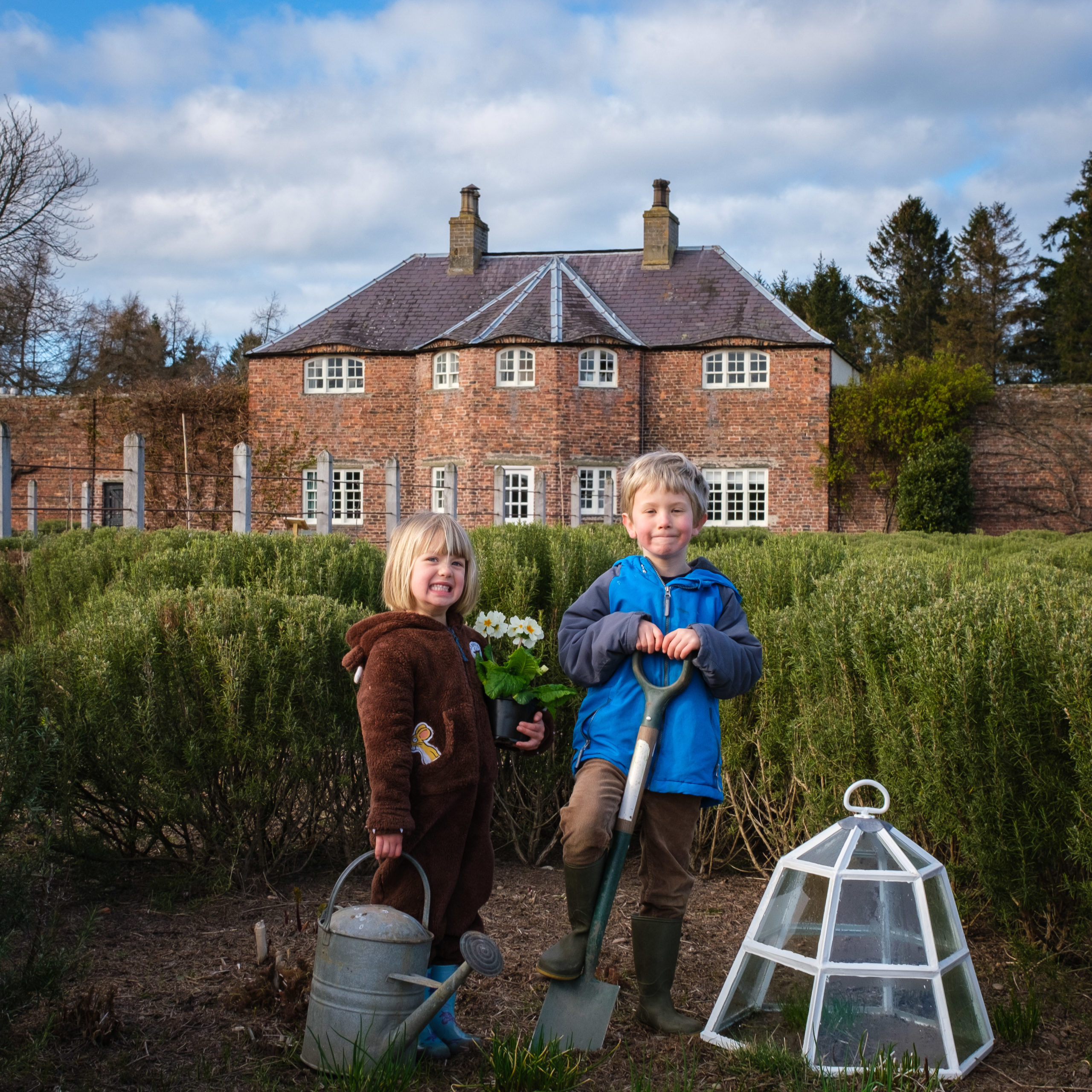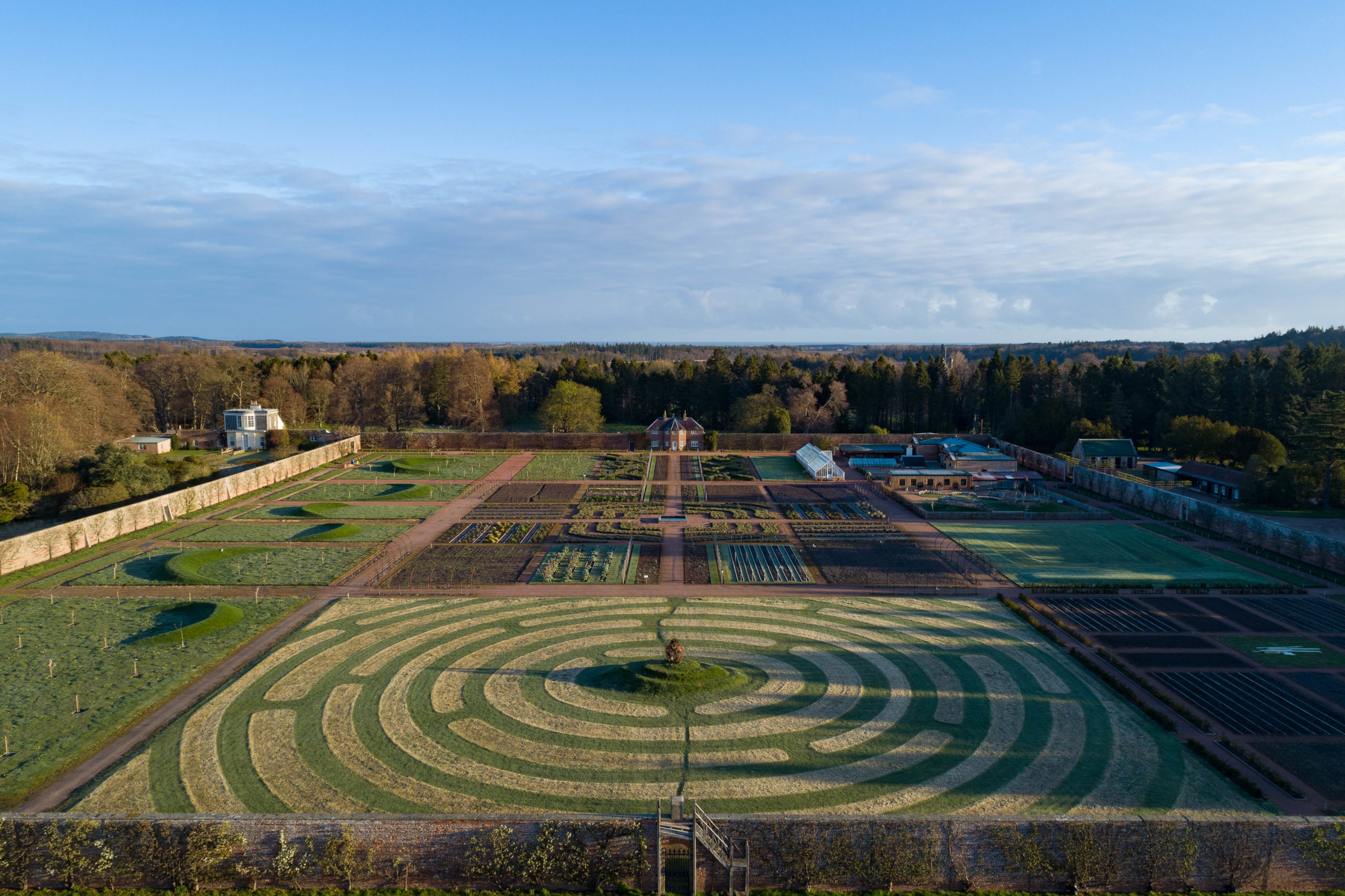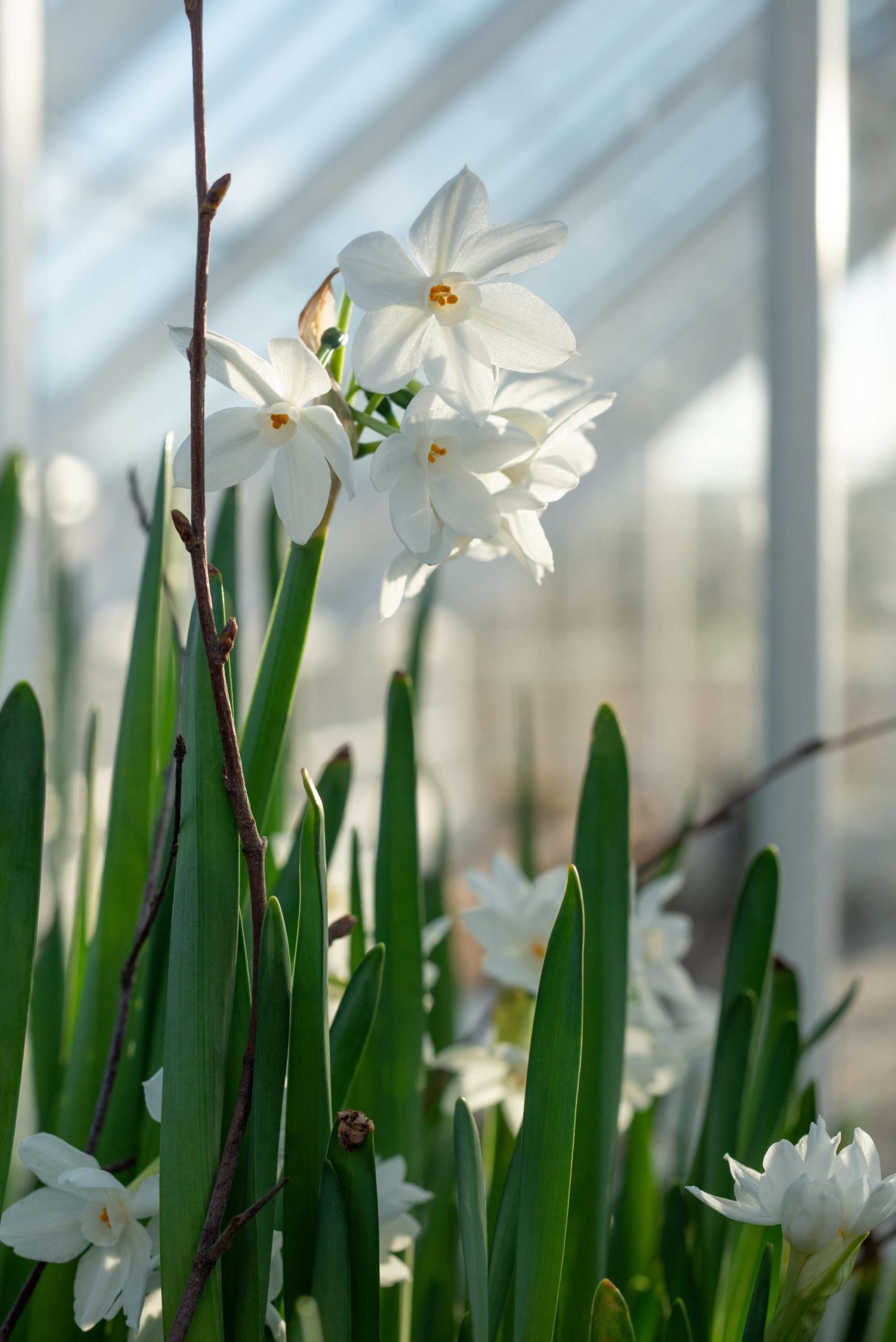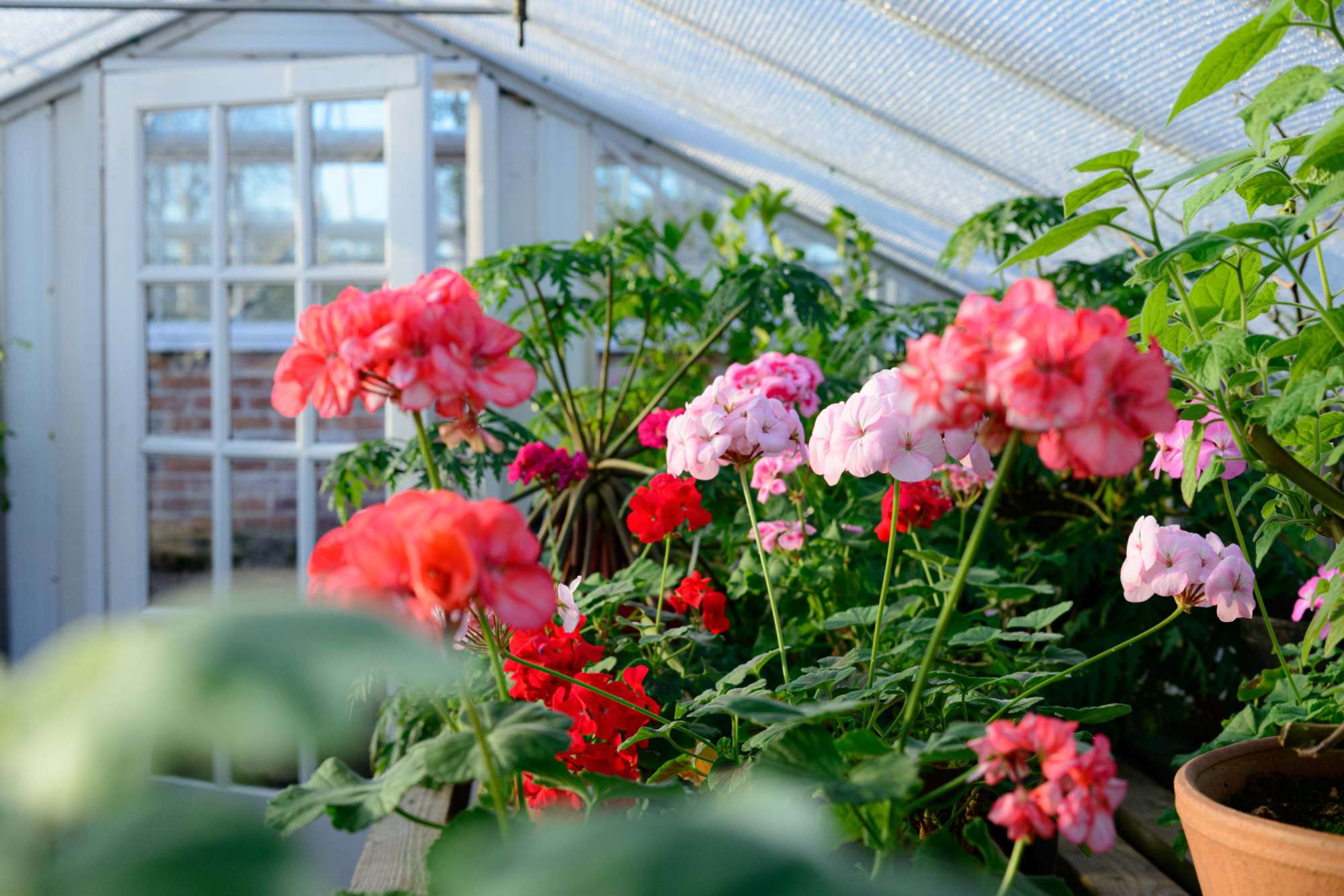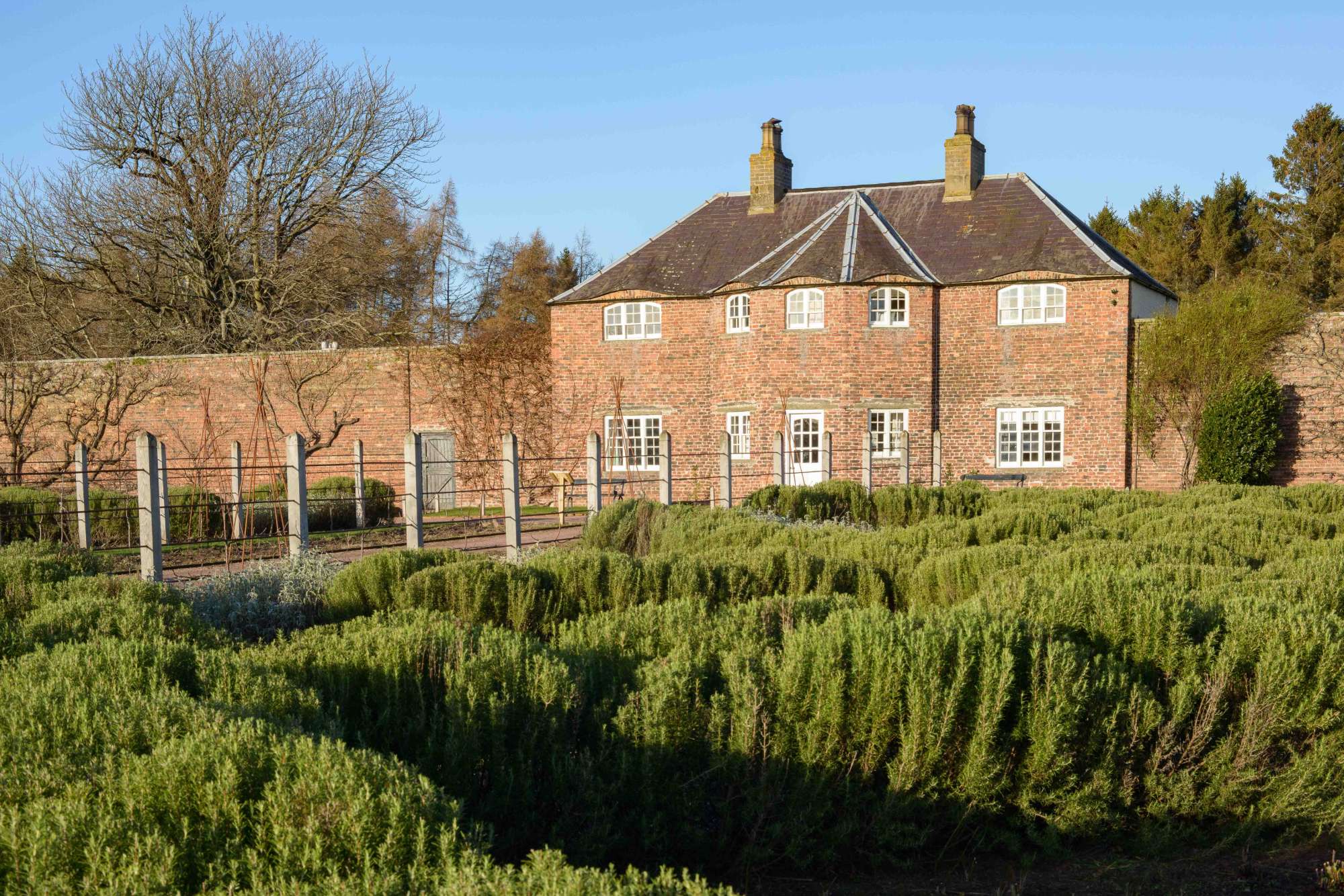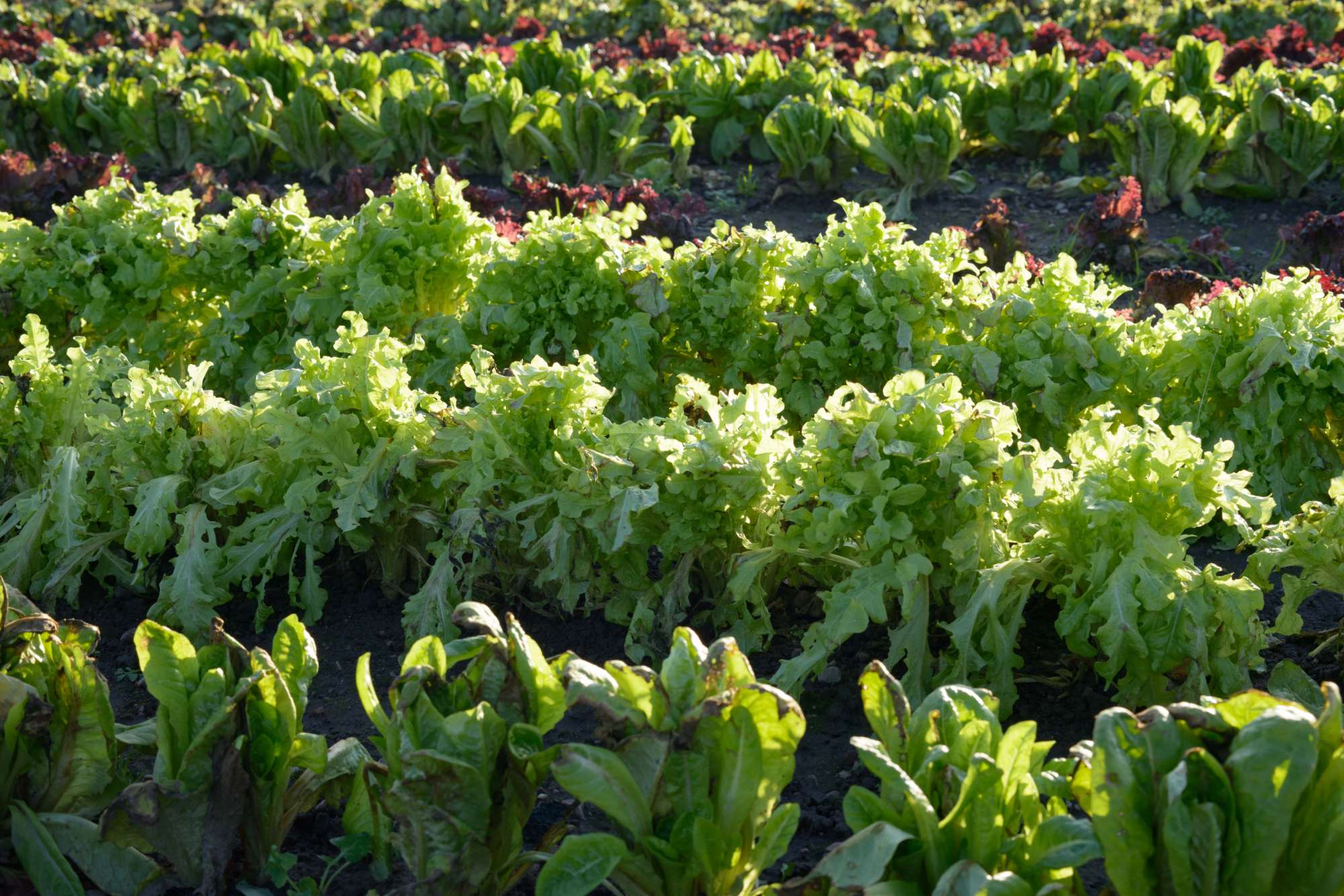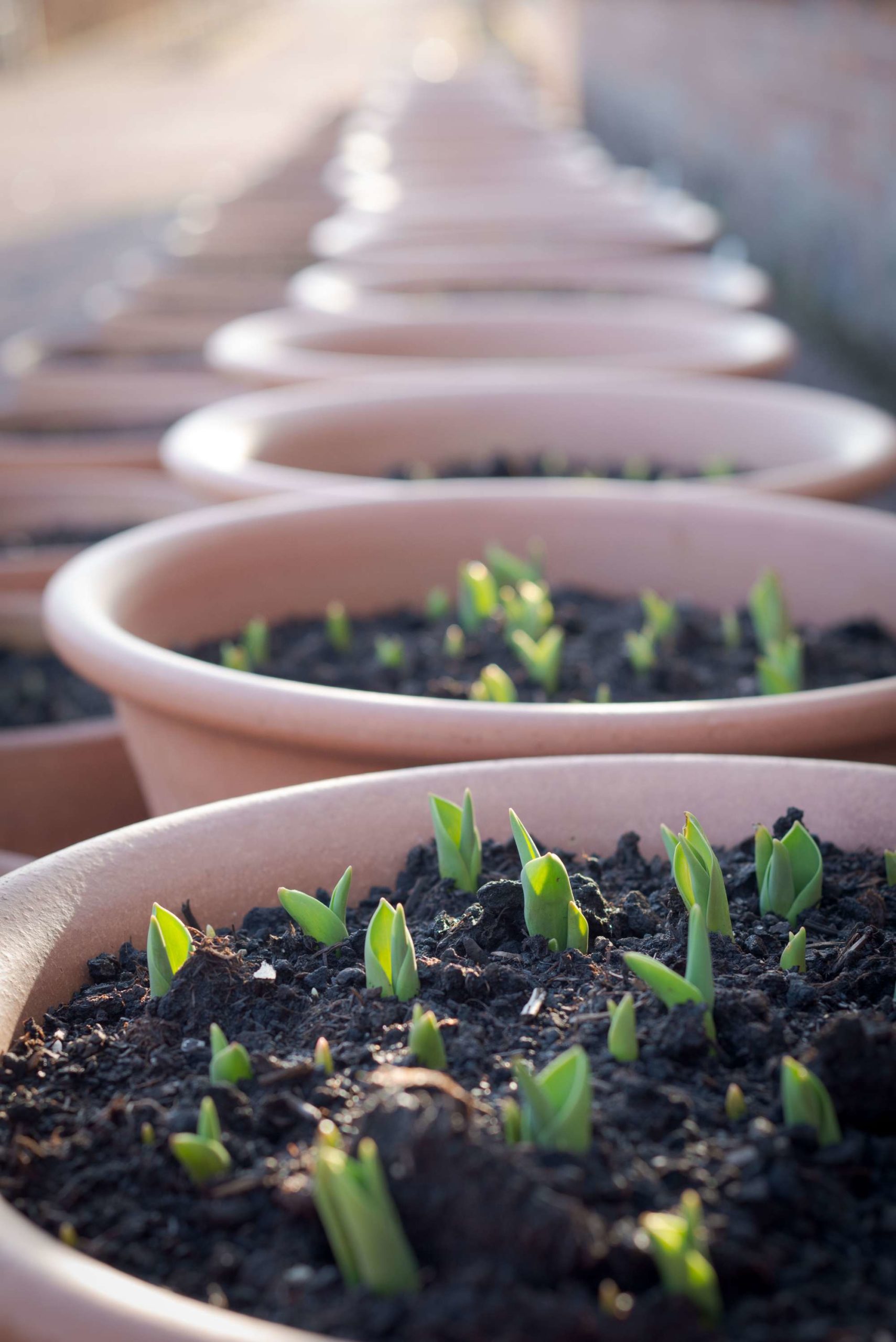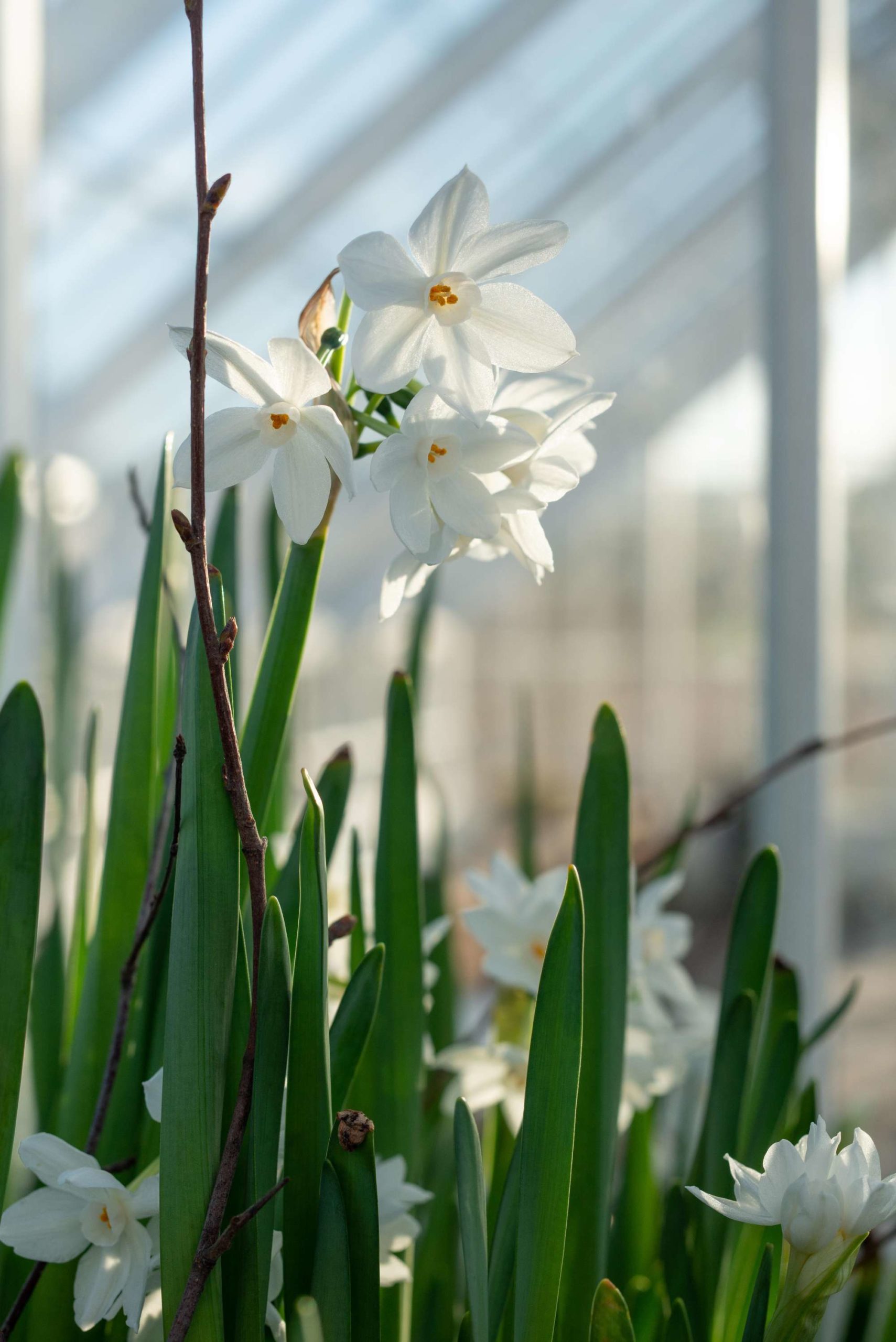
Driving under the arched gateway towards the castle I became very aware of the majesty and peace of this place. Ancient larch and pine trees, tall and strong, stand on each side of the drive. Over centuries they must have seen hand carts and horse drawn carriages give way to Model T Ford cars, bicycles, shank’s pony and many more modern modes of transport bringing visitors who come to ‘take a turn’ in the gardens.
The late summer sun bathes the garden in golden light illuminating the ripening harvest. Plums, pears and apples hang from fruit trees gilded by an enduring sun as if King Midas himself had brushed against them as he strolled past listening to the cry of the resident oyster catchers celebrating the last few weeks of their summer stay.
It was a mild restful day in early August when Ed (the head gardener) and I talked about the garden, seated on a wooden bench beside the lily pond. You could almost feel the garden slowing down with a sigh of restful fulfilment and gratitude for the bountiful harvest nature has provided. Bumble bees buzzing in the lavender at our feet have been abundant this year. Six different varieties have been identified so far.
As we talked, an interesting lady engaged Ed in enthusiastic conversation about the growing of ‘Billy buttons’ (crispidia). These bright everlasting flowers along with achilea, larkspur, helichrysum and lavender will soon be cut, bunched and dried to make autumn garlands and Christmas wreaths.
Colourful blooms of every shape and hue splash colour across the beds: sweetpeas, the bright softly rippling wild flower meadow, herbaceous borders and a trial bed of more unusual varieties. A delight to the eyes of numerous visitors who come for a stroll.
The large greenhouse boasts a rose bed: Pale blush pink ‘Queen of Sweden’, scented apricot tinged ‘Roald Dahl’ and pure white ‘Tranquility’ sit opposite emerging purple and citrus chrysanthemums all sheltered from the detrimental affects of rain.
Several florists come regularly to cut fresh flowers from the gardens and greenhouse beds. The gardens also supply bouquets to order, as long as the season lasts the popular bunches of sweet peas are also on sale.
Now in the ‘full glut of produce’ there is little rest and certainly not enough hours in the day for Ed and his hard working team of gardeners and volunteers.
The peas and beans have been prolific this year; the garden peas are now past but an abundance of French and runner beans remains. Sadly onions have not fared so well because of the predominately dry conditions, watering seems to do little to perk them up! The artichokes are growing well, the stunning edible flower heads maturing, and a delicacy soon ready to be picked and enjoyed.
The separate trial bed is slowly taking shape and we are looking forward to some interesting vegetables and tatties come autumn.
In spite of a cold spring, dry weather and late planting, the potatoes have done better than expected. Winston provided a good crop. The next early is Casablanca a creamy white fluffy potato, which steams, boils and bakes well and makes crisp roasters and chips but watch this tasty tattie cooks quickly.
Courgettes are prolific growing bigger day by day. A cook’s dream because there are so many dishes to be made from just one, savoury and sweet.
In the large greenhouse nearby grows an abundance of steadily ripening tomatoes and maturing chillies the ideal ingredients for many a cook.
In the small greenhouse aubergines gleam dark purple, bright green crisp cucumbers hang from the vine and some baby melons are just appearing underneath the leafy plants.
The apple and pear trees are laden and promise a rich harvest. Unfortunately the plums and apricots have not done so well being affected by the cold spring and late frosts which damaged the blossom and prevented pollinators from doing their job.
This year Ed has paid special attention to the peach trees growing against the wall behind the restaurant and his extra work has borne fruit. Large luscious peaches hang luxuriantly from the branches and some have already been picked. Sweet and juicy a Gordon Castle peach is a real treat.
We talk about the circle of the year, and each season the garden takes us on a journey. This month we leave the garden maturing resplendent in colour and rich in produce mindful of the power of Mother Nature to astound, please, calm, heal and provide.
The restaurant serves food Wednesday to Sunday from 11am till 4pm. Produce picked fresh from the garden features on the menu.
The gardens are open daily from 10am till 4pm. The Potting Shed shop sells fresh produce with free simple seasonal recipes, plants and flowers.
GARDEN RECIPES
Summer Stir up
A quick basic recipe made with fresh garden vegetables.
Shredded fresh green cabbage
2 baby courgettes sliced thinly
A handful of mangetout peas – remove the string along the back of the pod and shred
A handful of shelled garden peas
Olive or sunflower oil
1 teaspoon mustard seeds
1 clove garlic crushed
A handful of pistachio nuts
Sea salt
Ground black pepper
This is a quick dish to cook so make sure to prepare all the vegetables and have them in a bowl beside the cooker. Heat a splash of oil in a large frying or wok pan. Add the mustard seeds and stir till they begin to pop, quickly add the garlic stir a little then add the vegetables. Do this quickly or the garlic may burn. Keep stirring and tossing the vegetables till they are coated in the oil.
Add a splash of water, reduce the heat a little, cover the pan and steam cook for about 1 minute. Remove the lid, season with salt and ground black pepper then toss in the pistachios to heat through and serve.
Shak-shookit
A garden version of shakshuka! – Serves 2 people – Cooks in 15 minutes
1 tablespoon olive oil
1 medium onion – peeled and chopped
1 clove garlic – peeled and crushed
2 small courgettes sliced
2 large tomatoes – skinned and chopped
½ teaspoon ground coriander
Generous pinch of chilli flakes
Pinch of sugar
Sea salt to taste
2 fresh eggs
Heat the oil in a medium sized frying pan. Add the onion and stir fry to soften a little, add the courgettes and tomato and stir fry together. Add the coriander and chilli. Mix and then reduce the heat to allow the vegetables to cook and soften stirring occasionally to prevent sticking. Season to taste with a pinch of sugar and sea salt. Using the back of a soup spoon make two hollows in the cooked vegetables leaving them equally spaced. Break one egg into a cup and carefully lower into a hollow and repeat with the second egg. Sprinkle with a little sea salt. Cover the pan with a lid and cook on a low heat for 6 to 8 minutes depending how you like your egg cooked. Serve hot with crusty bread.
Roed Groed
A Danish red berry pudding which literally translated means ‘red groats.’
This simple dish makes use of fresh soft fruits – red and black currants, strawberries, raspberries, blueberries. It will taste different every time you make it depending on the fruits you use.
To serve 4 people
1kg (2.2lbs) mixed soft fruit
Granulated sugar
Potato starch, corn-flour or arrowroot
To serve
Fresh berries, cream, ice cream or yoghurt
There are two ways to make this dessert.
- Put the washed fruit into a bowl, mash the berries with a fork then sprinkle with sugar. Leave covered for 2 hours to allow the juices to flow. Drain overnight through a jelly bag or fine sieve.
- Put the berries into a pan, prick well with a fork and sprinkle over a little sugar. Heat till the juices flow then turn off the heat, cover and leave to cool. Drain as for method 1.
Measure the juice and allow 30g (1oz) starch to each 600mls (1pt) of juice.
Slake the starch with a little water and stir into the juices. Heat stirring all the time till the mixture thickens. Add sugar to taste. Cool a little then pour into serving dishes or a large bowl. Chill well and serve with cream, ice cream or yoghurt and fresh berries.
Raspberry cake with a hint of milk chocolate
Makes a cake tin 20cm x 30cm (8in x 12in)
4 eggs
85g (3oz) caster sugar
30g (1oz) golden syrup
85g (3oz) butter
60g (2oz) milk chocolate
200g (7oz) plain flour
2 teaspoons baking powder
175g (6oz) raspberries
Heat the oven to 180C (160C fan) 350F, Gas 4. Oil the baking tray well. Whisk the eggs and sugar till light and holding the trail of the whisk.
Meanwhile melt the butter and chocolate together and allow to cool. Sift the flour and baking powder into a bowl. Add the flour to the thick egg mixture along with the melted butter and chocolate and stir carefully together. Pour into the prepared tin and scatter with the raspberries. Bake for 15 minutes in the middle of the oven then reduce the heat to 160C (140C fan) 325F, Gas 3. for a further 10 minutes. The cake should be risen and firm to touch and the point of a skewer inserted in the middle comes out cleanly.
Cool in the tin. Cut into squares and enjoy freshly baked.
Hot smoked haddock and potato salad
Serves 4
1 small fillet smoked haddock
New potatoes approx 450g (1lb)
2 spring onions peeled and chopped
Dressing:-
1 tablespoon olive
1 dessertspoon fresh lemon juice
1 teaspoon soft brown sugar
1 teaspoon mustard
1 level teaspoon ground coriander
Salt and ground black pepper
Squeeze of fresh lemon juice
Steam or micro-wave the haddock until it is just cooked. Flake the fish roughly and lay aside. Scrape or peel the potatoes, cut into even sized pieces then cook in boiling salted water till tender but still firm. Pour the dressing ingredients into a screw top jar and shake well to mix. Toss the potatoes into a serving dish, add the haddock and spring onions then pour over the dressing. Stir gently together , stand for a few minutes to allow the flavour to develop and serve warm.
Guest blog written by Liz Ashworth

